- Home
- Adam Thorpe
Ulverton Page 17
Ulverton Read online
Page 17
The large laurel hedge to the right, beyond the first beech, is home to a curious, and apparently veracious, legend – though I have heard other versions: a humble shepherd, by the name of William, employee to the Chalmers family in the middle years of the last century, would hide within the said shrubbery in order to view secretly his adored mistress. His distraction eventually forcing him to sea, he ended his days under the lash of an overseer’s whip upon a sugar plantation – his visage being so darkened by his downland office, that he was taken for a black in those merciless times. Ulverton House is a fine example of the work of Sir John Vanbrugh, though the Gothic hall on the right is a recent addition. The gardens were laid out by the renowned William Kent, but have undergone numerous minor alterations since that date. A Royal visit, by our own sovereign, was made here a few years past, and it was for that reason the terrace was hung with thirty Venetian-glassed wrought-iron lamps, the fine detail of which is fully visible in this picture, despite the distance from the lens. The foreground distortion of the lawn is, I need hardly explain, owing to the wide angle of the subject.
I might add that the somewhat surly expression of the assembled group (in particular the two stout gardeners with their lawn-mowing machine on the right) may be explained not only by the difficulty of retaining a smile for some minutes, but also by a cold East wind that was blowing at that time across the lawn, lifting up the odd dry leaf, and affecting detrimentally the sharpness of the large dress of the governess (fifth from right) that has billowed alarmingly – a hazard with all outdoor work. Since most domestics are naturally of a surly disposition, at least in this writer’s experience, I have once again rendered the facts visibly and honestly, and improved nothing.
Plate XXVIII
A COTTAGE ROOF
The enthusiastic photographer must always be on the watch for Nature’s tiny miracles: those effects which urban dwellers lack, and in their smoky habitat grow dulled from, so that the soul remains unmoved by simple glories. Herein is the principal task, then, of the new art of the lens: for what other purpose must we serve but the bettering of humankind, in the bringing to its attention that miraculous system that has its being all about us but that we too easily take for granted: for Time hurries us on, and our needs make us blind.
Here is a simple cottage roof – or rather, a detail from that structure – to illuminate and (if I may be so bold) impart instruction of a spiritual nature. The original is to be discovered down a muddy track known as Surley Row, at the northern extreme of the village, and presents, to the uninitiated observer, a most dilapidated and unattractive prospect. But it is in these areas that the photographic artist wanders with most reward: nothing more profoundly salubrious than an old stone wall, nothing richer than a bedraggled plum-tree, nothing more enticing than a raven’s discarded feather, or a dust-filled barn spread with ancient sacks, or a pond wherein the weeds lie dank and idly swaying! For upon these surfaces lies a cornucopia of satisfying differences, that the lens, with its unavailing sincerity, and its unjudging eye, captures upon the plate with a fidelity of draughtsmanship the great Leonardo might have envied. My own soul is moved, not by the ornate sculpture of a great house, or the sighing willows of a great garden – but by the winter branch, the puddled track, a white surf of Shepherd’s Purse in a meadow, the silvery plumes of Traveller’s Joy upon a hedgerow, the frayed hem of a cotter’s shawl. And here, dear viewer, note what riches are to be found if only the eye would seek them out! This is no longer the moss-grown, decaying, vermin-ridden blanket beneath which poverty strives to keep the chill at bay, but a glittering tapestry of loveliness, a source of meticulous meditation, and an assurance that even the humblest and most wretched of abodes is not neglected by the Almighty’s brush.
For the frost being severe that January, I noted how, the thick rime on the roofs having melted, the released water ran down to the very tip of each inclined stalk of straw that had been its host – and hung there, as if the simple thatch was unwilling to release its sudden adornment: when the sun shone, as it did frequently that crisp winter, the whole glittered with a beauty beyond compare, transforming what was sullen and coarse into a sublime perfection. I made several studies of this phenomenon, but I have included here the one which, however inadequately, comes closest to capturing that bejewelled effect – as the Dutch painters once caught the sheen of silk, or the exquisite hint of canker in a peach’s bloom, upon their small canvases.
Plate XXIX
ACROSS THE DOWNS
No more suggestive subject than an ancient road, redolent of the past! Here the main highway from our village, where it rises up across Mapleash Down, has served my purpose. If the reader wishes to photograph a road – whether the broad confidence of an old turnpike, or the meddlesome ruts of a track – then choose a day after rain, when the sun is out, but the earth still moist: then see, as here, how the way gleams with a silvery tone, up to the farthest horizon, if the sun be before you, but not so directly in front as to blind. No longer are the pools and brimming ruts a menace to polished shoes, a trial to the scrubbed gig, a curse on the coachman’s coat-tails: to the enthusiastic photographer these silver islands are like beacons to a better world, for they lead the eye of the viewer towards the far hills, the distant copse, the shadowy combe: those horizons that speak of sublimities, though the path be hard and long.
On either side, you may notice, the turf of the downland pasture is lacking in details, and dark: but this is quite deliberate, for the road then shines with greater contrast, its curving nature sinuous as the scales of a serpent. Indeed, keeping in mind the very conditions of light essential to the effect, this chiaroscuro can hardly be avoided. The great oak upon the right, known popularly as Sam’s Throne, its trunk conveniently splashed with the chalk, gives weight and interest to the middle distance, which might otherwise be too sparse – while the glint of the iron catch on the gate in the far distance was, I am content to confess, a happy accident.
You may wonder why it is I have no human interest in this picture – no weary pilgrim leaning against the tree, or plodding his hedge-shadowed way. It is imperative to remember that a human interposition immediately subsumes any sublime feeling in a work; there is a kind of sublime melancholia, I suggest, here present, that arises out of the suggestiveness of a presence just around the corner, or about to come into view – for no road is made for anything other than human passage. If that passage be absent, as here, how pure and clean becomes the metaphor! The spectator is drawn towards his own destiny, in which no one truly shares but our watchful Creator. Only the passing of past generations resounds in all its invisible ghostliness – the tramp of legions, the earls on their palfreys, the peasants bent under their faggots – while those generations to come, the snorting of traction engines and the whip-cracking chaises, lurk in the shadows of Destiny.
Plate XXX
THE BLACKSMITH’S SHOP
Here, under the great and cooling shade of the chestnut, Frederic Moon plies his ancient trade. In the long-ago past of pagan mystery, the Evil One passed near Ulverton, and demanded of the smith his service: the smith declined to shoe those terrible hooves, and was turned to stone. The Devil thereupon limped away, leaving his mark in a curious depression on Louzy Down, that the less imaginative say was the quarry for our White Horse (see Plate XV, ibid.), that canters (albeit somewhat grey and brambled) upon the same slope. The stone rests, rain-worn, but still (from a north-easterly angle) shaped like a man bent over an anvil, on the brow of a nearby hill, and rare is the villager that dares approach it at full moon, when the forlorn striking of iron on iron is said to echo across the vale.
Happily, in these Christian times, Mr Moon (coincident name!) is asked to cradle nothing more terrible than a nag’s leg, as here he is doing. Alas, no amount of cajoling can persuade a horse to keep its head from moving, or tail from swishing, however firm the hand upon the bridle – and Mr Moon’s strapping assistant, Master Harry Dimmick, did all in his powers to still the bea
st. The trestle, grindstone, and other sundry items were purposefully arranged, as in a painter’s canvas, to please the eye – much to the amusement of the fellows, who were more used to tossing their tools onto the most convenient spot at hand! Indeed, I requested that the rain-barrel against the wall could be shifted more firmly to the right of the picture, thus counter-weighting the window on the left, but they claimed (in great consternation) that it instantly, and without hesitation, would fall apart, and its precious liquid (this was late summer) be given to the dust.
The older folk, on viewing this operation, were heard to remark how the village was without a smithy for a full year, some thirty-odd years ago. On requesting the reason for this improbable occurrence, I got little satisfaction beyond a few murmurings of ‘that trouble’, or ‘that gurt black day’, until one old dame of great spirit informed me that, ‘old Dick Bowsher was transported for seven year, an’ passed away out yonder, poor soul’ – to a silent applause of slow nods and grim faces. Mr Bowsher being the village blacksmith, and accompanied on his sad voyage by several other fine bodies from the locality (their leader, a Mr Oadam, having been dealt with capitally), no replacement was to be had (or, I venture to suggest, desired) and the smithy fell almost into ruins. The crime of said persons? A desire for living wages, and a fear of machinery, that sprang forth in those riots of some thirty years ago, that caused the nation such alarm, but were snuffed out with a ferocity one can only feel belongs to less civilised nations (see Plate XXXIV, ibid.), and that has not brought any marked improvement in the lot of our poor John Hodges.
Plate XXXI
AFTER THE HARVEST
Again, I draw the reader’s attention to the minute particulars in our surroundings – whether they be rustic or urban – that serve the photographer so efficaciously. This is, indeed, an Example whose title exercises that faculty in the viewer, and once exercised, I venture to hope that the said viewer will depart into the world with a surer eye. For where, you might ask, is the subject? Here is another road (I am partial to roads) and there is a part of a field, and hedgerows, and a clear sky (those sooty black specks are not the outcome of mishandling, but are passing birds – many the image marred by those spirited creatures!) with a farm of picturesque quality in the near distance, sunk under its four great elms (it is known, in the appealing way of country nomenclature, as Five Elms Farm) – but where is the rustling, creaking haywain? Where the dust of the bringing home? Where the rosy-cheeked children riding the stack?
But look more carefully: something has, indeed, passed this way. It is early morning, and the low sun before us lights the track: the track is dry, and absorbs the light. But there is something other, some strewn matter, that does not absorb – that appears to rejoice in the sun; as if its gleam is a welcome, a memory of happier, golden times – before the fall upon dull ruts, or the hook of the eager hawthorn bough! The textural properties of this matter make of it something like precious metal, gathered by passing wheels into the middle part of the road, where it resembles (in actuality) a golden spine, or a long lock of Rapunzel’s hair, with its sheen woven into the distance – but likewise immediately puts one in mind of the mental track, with its golden thread of higher effort, that can so easily be blown into disarray by the gusts of fate and bitterness.
This, then, is the only evidence, dear reader, of all the bustling and moisture and thirst and singing that is harvest-time – but how poignant, how much more poignant, this evidence! And for how long will this precious spill – for precious it is indeed, in the thrifty world of the countryside – be allowed to lie in the dust, to be trampled into oblivion by hooves and cart-wheels?
Plate XXXII
DRAWING THE WATER
Banish from your imagination that Biblical scene when Christ approached the woman at the well, in which the young girl no doubt sports a fair complexion, and pretty hands, and a lithe figure – and replace it, I dare suggest, with this image now before you. No pump or well, in this end of the Village (named, appropriate baptising! Back Lane) but a muddy brook beside a rotting gate-post, which surfaces sullenly from its subterranean passage at this point, and several others, along with its cargo of excrement, and drowned rats, and other choice items off the muck-hills, that are regularly heaped up against the cotter’s walls.
Replace, then, the young beauty of your illustration with this actual villager (a Mrs Eliza Pyke): for those sturdy buckets on that sturdy yoke are filled to the brim, and may not be transported by pretty hands, and a lithe figure – but by the form you see before you. It is not a want of fellow-feeling has made her taciturn of expression, but the chafing rub of the wood upon her shoulders. It is not indulgence has puffed out her features, but an eternal died of white bread and weak tea. She has no need of refinement of posture, or of gesture. Lest she stand fair-square and broad – her back would break.
Where is the water bound? It is washing day. The tub will soon be out, the soil-caked garments soaked and scrubbed – but there is no mangle in Back Lane; no mangle but the arms and hands you see before you, soon to be slapping and twisting and pummelling – for do not pretend to yourself, in your mobile imagination, that those heavy garments will steam merrily before a blazing hearth, when it is wet without (as it was that day). In Back Lane, in Ulverton – in the downland heart of our great and glorious Empire – there are no blazing hearths, but only smoke. Alas, that the necessary minute of exposure has blurred those foul billows to a vague, smudged whiteness across the roofs! For this is smoke which would (if the doors were shut fast) choke the occupants to an untimely death, surpassing far the vile air of Manchester or London – and causing one’s attention, on passing these miserable hovels, to be caught by the litany of coughing within: the heartbreak treble of the children, or the bass clatter of a father scouring his lungs. For firewood, dear reader – the kind stacked brittle and dry, perhaps, in your orchard (if you are not partial to coal) – firewood does not grow on trees. It must be gathered, or paid for: and few are the places left for gathering, in this Kingdom of the partridge and the hare!
So do not forget, when you next peruse that holy passage, or don your clean silk stocks – do not forget this image, lest vanity take you by the hand, and lead you from heavy-shouldered Truth to the whirling drapery of Illusion.
Plate XXXIII
DUSK IN THE WOODLANDS
A forest of beech in the summer, seen from without, presents a blank wall of leaf, until (if the wood be viewed from the correct compass-point) the ebbing sunlight, from one flank or the other, shafts through the midst, the front wall of trees grows dark in silhouette, and Nature reveals, as in a suddenly pellucid pool, the secret heart of the wood. This effect is more pronounced, perhaps, in winter, when the natural shadows of the wood still render it opaque from the outside, but the absence of leafage allows a startling brilliance of bronze, or copper, or a bloody red, to strike the boles and trunks of the interior, and as it were illuminate the hidden soul, on a fine dying afternoon. Beech woods, of which there are an abundance around our village, favouring as they do the chalk soil, are the true friends of the photographer: their sinuous lengths, unencumbered by ground shrubbery, rise as the pillars of a cathedral to their exultant heights of transpicuous, gauze-thin leafage.
Until the impossible is gained – and the myriad colours of the universe are arrestable likewise on our silvered plates – we must be content with the play of light and shade, the infinitesimal tremble of texture and tone in a moment’s grace, the unencumbered beauty of Nature’s pen that brings through our lens, as a richly-laden camel through the eye of the needle, her unsurpassable artistry. So this straddling copse, called Bayleaze Wood, of a spring evening, with the breath of night on the air, and the sweet breath of day folding itself onto the forest floor, becomes the entranced glimpse of a better world, where mystery is gilded, and a thousand paths open up where only a screen stood before.
But wait – there is a human figure: poised beside the broad tree on the extreme left, his pal
e hat chiming with the creamy stroke of the lopped bole on the far right, he stands proudly in his domain – for this is the woodcutter, sharp axe in hand; though he be but a dwarf, but a dab of dark leather, in this gargantuan realm.
Plate XXXIV
PEASANT WOMAN, OR ‘FORTITUDE’
The portrait study, with its long ancestry, and its popularity with those who wish their features, at a certain moment in life, to be recalled without the smoothing generosity of the painter’s brush, remains the most illustrious, but also the most easily facile, of all photographic subjects. I confess that, for my living, and to keep in servants, I crowd my studio with the good and the great of our fustian county – magistrates, doctors, barristers, professors, divines, and so forth. But now and again I cajole one who would otherwise never set foot in my room, clamp the head of one who would otherwise remain in a fog of others’ memories (until the passage of time had eroded even that brief retainment of uniqueness) and etch each wrinkle, each pockmark, each hair, upon a tablet that dares eternity – for there are no flawed elements to the eye of the camera, but only the God-given grace of living appearance, that holds in every line the years endured, and the spirit borne.

 Missing Fay
Missing Fay Hodd
Hodd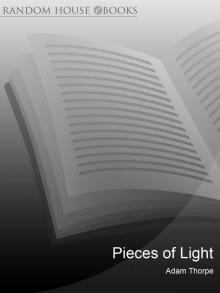 Pieces of Light
Pieces of Light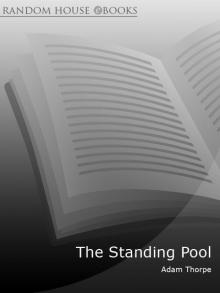 The Standing Pool
The Standing Pool Ulverton
Ulverton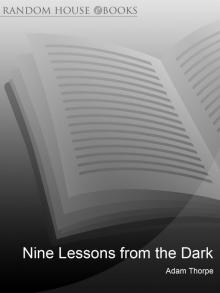 Nine Lessons From the Dark
Nine Lessons From the Dark Flight
Flight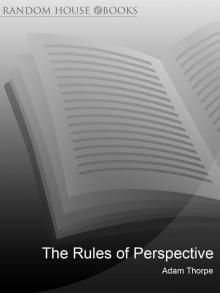 The Rules of Perspective
The Rules of Perspective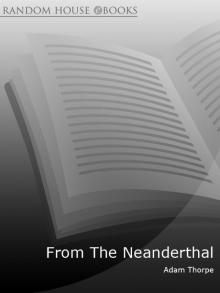 From the Neanderthal
From the Neanderthal Is This the Way You Said?
Is This the Way You Said?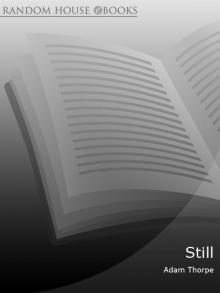 Still
Still No Telling
No Telling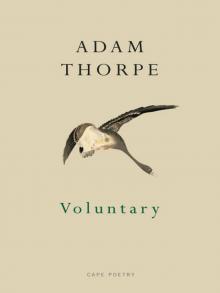 Voluntary
Voluntary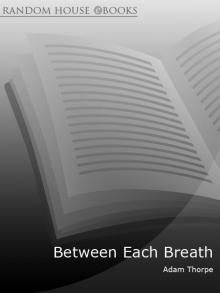 Between Each Breath
Between Each Breath